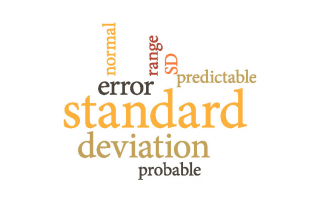Biostatistics
Anwendungsbegleitende Datenerhebungen (AbD)
Eine Anwendungsbegleitende Datenerhebung (AbD) ist eine nicht-randomisierte, vergleichende Evidenzgenerierung, die in der Regelversorgung durchgeführt wird. Der Gemeinsamen Bundesausschuss (G-BA) kann eine AbD anordnen, wenn die vorliegende Evidenz für ein Arzneimittel nicht zur Quantifizierung eines Zusatznutzens als ausreichend erachtet wird. Betroffen sind Arzneimittel für seltene Leiden (Orphan Drugs) sowie Arzneimittel mit speziellen Zulassungstypen (bedingte Marktzulassung oder Zulassung unter besonderen Umständen).
The course of a pandemic – epidemiological statistics in times of (describing) a crisis, pt. 2
A few weeks into the pandemic, the RKI switched its main reporting indicator from the absolute case numbers to the time dependent case reproduction number R(t). R(t) represents the number of unaffected persons that are infected by an index case.
The course of a pandemic – epidemiological statistics in times of (describing) a crisis, pt. 1
Throughout the current Corona pandemic, epidemiological statistics are widely used in everyday life to an unprecedented rate. Various media use different indicators for all kinds of purposes, be it the honest attempt to objectively communicate the risk associated with SARS-CoV-2, or in order to up- or downplay the mortality rates.
Clinical prediction models in the COVID-19 pandemic
Facing the world-wide spread of coronavirus disease 2019 (COVID-19) infections with hospitals overcharged and a shortage of medical equipment in several countries, diagnostic and prediction models might help to identify patients with COVID-19 and predict the likelihood of the disease outcome (e.g. severity of disease, recovery, death).
Standard Deviation and Standard Error – What is the Difference?
When studying results of scientific publications one usually comes across standard deviations (SD) and standard errors (SE). However, even both measures are widely used the difference between them is not always clear to the readers. This article aims to clarify some important points and to provide a deeper understanding of SD and SE.
Intention-To-Treat (ITT) vs. Per-Protocol (PP) analysis: what to choose?
Differences between and characteristics of the Intention-To-Treat (ITT) vs. Per Protocol (PP) principles: which is the method of choice for the primary analysis of your clinical trial?






